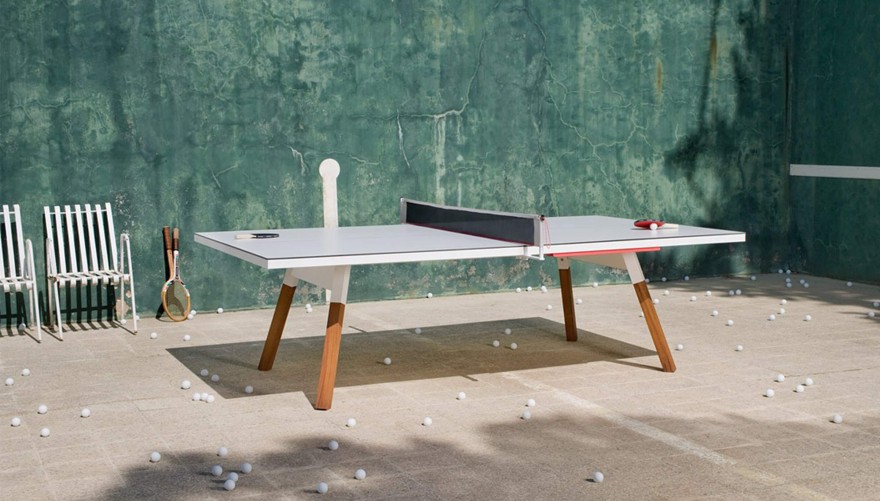New street furniture and parklets are reclaiming public spaces
Our towns and cities are in a state of flux. Trends range between seeing our homes as places of refuge to yearning for venues where we can meet others. Urban planners have long been calling for cities that are tailored to fulfil residents’ needs. Today, modular designs and new street furniture concepts are taking over public spaces with the aim of bringing urban architecture into line with people’s requirements and creating places that offer a good quality of life for young and old alike.

(Photo: Marco Testi on Unsplash )
Life between indoors and outdoors
Community gardens and outdoor gyms started a trend that is now seeing more and more aspects of city centre life moving outdoors. Roof terraces are being upgraded into modern co-working spaces using modular furniture, pockets of green and layouts designed to encourage communication.
The trend towards outdoor living continues to grow. Multifunctional barbecues and mobile outdoor kitchens are opening up new forms of al fresco dining, while weatherproof carpets keep things cosy. The multifunctional table tennis table from RS Barcelona can be used as a desk in the morning, a dining table at lunch and a playing surface for a game of ping-pong in the afternoon. And even on small balconies , elegant outdoor materials blur the boundaries between indoor and outdoor spaces . Urban life is increasingly moving outside.

The stylish “You and Me” table tennis table from RS Barcelona is both a playing surface and a dining table. (Photo: RS Barcelona) Find out more about the multifunctional design on ambista .
Streets and parklets as social venues
Human beings will always be social animals. This fact has long been neglected in the development of large cities, with the result that public spaces in urban environments are unevenly distributed. But in recent years, green spaces and parklets – small zones where parking bays have been replaced with seating so people can rest and relax – have increasingly gained ground in major cities from Berlin to New York. What started in 2005 with a day of action called “PARK(ing) Day” is now part and parcel of the revitalisation of city centres, with parking spaces disappearing or being transformed into seating areas, pavements being widened again and cafes expanding their outdoor areas.
Comfortable benches and folding tables can be set up as required and thereby adapt to the existing gaps in the urban environment. Planters flank these islands of leisure space, protecting them from traffic and forming a refreshing green buffer against the hustle and bustle of the big city. Modular designs mean furniture can be easily extended at any time, as required.
These small, shared spaces spread out across a city are particularly popular and breathe new life into even densely populated urban centres. Social interaction calls the shots here, the pace is determined by human rhythms and the life of the community blossoms as people walk, cycle and chat with friends and neighbours. Parklets have now become an integral part of modern urban planning.

This wooden parklet in the Polish city of Lodz incorporates seating and greenery. (Photo: Zorro2212 , Parklet in Łódź 01 , CC BY-SA 4.0 )
When street furniture becomes outdoor art
Astonishing results are created when street art meets furniture design. One particularly remarkable project is the collection of colourful outdoor benches by Camille Walala, which she installed as part of the London Design Festival in 2019. With eye-catching patterns and striking colours, these benches turned the pedestrian zones into more relaxed spaces and invited passers-by to take a break amid the hectic activity of the city. Paul Cocksedge’s undulating installation “Please Be Seated” caused a similar stir due to its sheer size and the clever way that the wave formation integrated both seating areas and access routes.
Of course, smaller designs can be effective too. With seats positioned exactly 1.5 metres apart, the portable bench by the Dutch design firm Object Studio gives people somewhere to meet even during the pandemic thanks to built-in social distancing. And in Croatia, a team of designers has developed Level Up , a system of steps, benches and platforms that can transform any scaffolding into a temporary social space.
In this new generation of street furnishing, the boundaries between functionality and art are blurred. By focusing on human needs, creative solutions are being found for everyday usage scenarios that are revitalising the streets and squares of residential districts. And the best thing about it is that the modular designs behind these ideas mean they can be put into action quickly and with extraordinary flexibility in order to meet tomorrow’s changing requirements.

Head outside with this compact, modular street food kitchen by Erik Mantz-Hansen. The young designer’s prototype won first prize in the Living Kitchen Selection as part of the Pure Talents Contest 2021 at imm cologne .
Street furniture: reinvigorating public spaces
The development of our towns and cities is a never-ending process, driven by needs and demand. In recent years, the trend towards cocooning has led architects to create venues and homes that favour “staying in and looking out” and sideline social interactions – a situation that the coronavirus pandemic has, of course, exacerbated.
At the same time, people are being drawn into public spaces, and the need for meeting places is growing. Alongside the urban planners and architects, it is mainly designers and furniture manufacturers who are changing the appearance of public spaces by means of modular street furniture designs and innovative ideas. From outdoor workspaces to public gyms and creative street furniture to ideas for small balconies, life is migrating back outside thanks to clever design solutions. Although this process of urban transformation has only just begun, it will be hard to stop.
Even away from the public sphere, there is a need to share space more. Click here to read our trend report on the topic of “Sharing Spaces”, which highlights the latest developments relating to co-working and co-living.



